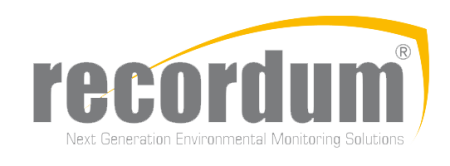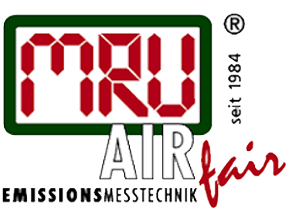Early history – technology development
At first, the Finnish researchers understood that the prospect of being able to measure multiple gases simultaneously was very exciting, but at the time it was difficult to identify the best market for the technology to address. Initially the high resolution FTIR technology developed in the University was only used for laboratory research applications. Environmental legislation was only in its formative stages, but conscious of a growing desire to protect air quality, the researchers felt that the long-term prospects for the technology were sound.
Using FTIR (Fourier Transform InfraRed) analysis, the workers had shown that it was possible to collect a complete infrared spectrum (a measurement of the infrared light absorbed by molecules inside the sample gas cell) for gases, and from this it was possible to generate both qualitative and quantitative data for the measured gas.
Commercialisation
The first commercial partner was the company Scanoptics Oy, which worked on a high resolution FTIR spectrometer for the laboratory market and succeeded in selling two units to Finnish Universities in the early 1980’s. Since this business approach did not prove to be successful, the company changed its focus to develop a low resolution FTIR spectrometer for industrial applications and developed the initial prototype in the late 1980’s.
It is important to note that FTIR was also being developed elsewhere for use in the laboratory for qualitative analysis of liquids and solids. Crucially, if Scanoptics had chosen this market in the early years, the technology would have been unlikely to be suitable for emissions monitoring (which became the main market for Gasmet’s FTIR) because sufficient emphasis would not have been given to the ruggedness of the technology to withstand demanding industrial conditions.
However, since 1959 in Finland, it has been compulsory to include a shelter in any building over a certain size. Naturally, the quality of air inside these shelters is a primary concern, so Finntemet Oy, a Finnish manufacturer of shelters and blast resistant and gastight doors, was interested in gas analysis, and in 1990 they acquired Scanoptics’ FTIR business. This soon led to the creation of Temet Instruments Oy, which at that stage consisted of just four scientists; one working on electronics, one on the optical components, one on the mechanical design and one on software. At that time, there were no commercial or business development staff, so the focus was solely on the development of the technology.
The first Gasmet FTIR gas analyser was sold in 1993 – its serial number was #9301, and it was used successfully until around 2005. Long-term reliable service was a key objective for the Temet FTIR instruments and for this reason most of the company’s early years were spent improving the technology. This naturally created financial pressure, but the investment proved worthwhile as new environmental legislation created a heavy demand for emissions monitoring equipment.
 |
| 1990 – 1995: One of the first analysers from 1994, still in use after 20 years |
The growth of FTIR
In the United States, the 1990 amendments to the Clean Air Act addressed toxic air pollution and established a national permits program for stationary sources, and increased enforcement authority. As a result, the USA was initially the largest market for emissions monitoring equipment. However, in the early days, the reputation of FTIR was tarnished by companies that tried to adapt high-resolution laboratory FTIR for emissions monitoring applications. As a result, for early adopters, it was necessary for the Temet FTIR to be installed in customers’ processes so that they could see the flexibility and reliability for themselves.
 |
| 1995 – 2000: transportable DX3000 FTIR on wheels |
International performance certification schemes have been extremely influential in building confidence in FTIR and in the growth of the Gasmet business. However, certification by organisations such as TÜV in Germany and MCERTS in the UK, is a costly and time-consuming process. Nevertheless, environmental regulations around the world have increasingly required monitoring equipment to be certified and this has been a great benefit to Gasmet.
In addition to a reliance on the development of environmental legislation, it was also necessary to overcome market resistance to multicomponent analysers. In the 1990s process managers with a regulatory requirement to monitor a small number of specific gases preferred to buy individual analysers for each gas and if the number of gases was relatively low, this was generally less costly than a multi-component FTIR analyser. However, the operators of FTIR analysers were able to demonstrate a number of important advantages. Firstly, they were able to measure an almost limitless number of other chemical compounds that helped them to better manage their processes. Secondly, as legislation developed, it became necessary to measure new compounds for compliance purposes, and this was simple and cost-free for the users of FTIR, whereas those with single-gas analysers needed to purchase new hardware.
Many factors affect the choice of analyser, but the regulatory requirement is of course the most significant. A coal fired power station for example, may only be required to monitor SO2, NOx and CO emissions, whereas a municipal waste incineration plant will have to monitor other parameters such as organic compounds, HCl, HF and dioxins and heavy metals etc.
FTIR is ideal for process operators that need to:
- Analyse multiple components
- Analyse hot/wet gas
- Analyse any gas in complicated gas mixtures
 |
| 2000 – 2005: portable DX4000 FTIR |
Management Buyout
In the early 2000s, demand for the company’s products grew very quickly requiring high levels of investment. This led to a management buyout in 2005 which resulted in the formation of Gasmet Technologies Oy. By that time, all of the company’s research, development, manufacturing and head office operations had been brought into one facility in Helsinki. Sales and service activities were undertaken by a global network of distributors and subsidiary offices in Hong Kong (2005), Canada (2009), and in Germany (2013).
The strategy of keeping all major functions in one facility was given a high level of priority because it enabled Gasmet to control the quality of key components such as the FTIR’s interferometer and also because it ensured that a high level of expertise was available before and after sales.
New Technologies
FTIR remains the most important analytical technology employed by Gasmet. However, until 2004 all of the analysers functioned by extracting a representative sample from a process or emission stream. At this time, the world’s first in-situ FTIR gas analyser was launched.
Later, in 2008, Gasmet launched the world’s first portable ambient FTIR analyser, the DX-4030, capable of analysing large numbers of compounds simultaneously. This instrument brought Gasmet into many new monitoring applications; helping users to identify and measure almost any gas. At the time of writing (July 2013) the latest version, the DX-4040 remains unique and has been employed in occupational safety, incident response, Hazmat, chemical spill and fire investigations, shipping container testing, anaesthetic gas detection, greenhouse gas research and many others.
 |
| 2010 onwards: battery powered portable DX4040 FTIR |
In 2013, Gasmet launched a new continuous mercury monitor (CMM). Coinciding with a new global treaty to reduce Mercury emissions, the new CMM could not have been better timed. Mercury is recognised as a chemical of global concern due to its long-range transport in the atmosphere, its persistence in the environment, its toxicity, its ability to bio-accumulate in ecosystems and its significant negative effect on human health. The CMM employs cold vapour atomic fluorescence (CVAF) to deliver very low detection limits at a significantly lower cost than other comparable mercury monitoring instruments.
Why has Gasmet been successful in the global market?
Gasmet has diversified significantly since its inception, which has helped to reduce business risk. However, emissions monitoring remains the largest application, and this is important because this presents challenging conditions for high-tech instruments, particularly since they are expected to run all day, every day, so it is extremely important that the technology is robust and very reliable. Typically, Gasmet’s analysers last from ten to fifteen years, significantly out-performing the computers that are employed to run them.
Every Gasmet customer is different, which means that almost every analyser is unique. Therefore, Gasmet and its distributors have invested heavily in technical support so that customers receive bespoke monitoring systems, tailored to meet their specific needs. The company’s philosophy is to sell solutions, not just instruments.
By manufacturing in-house Gasmet maintains a firm control not just over the quality of the products, but also the costs because there are no extra margins for outsourced sub-contract manufacturers. The quality of the products is further reinforced by the investment that has been made in performance verification/certification.
Finally, given that environmental legislation was only in its very formative stages, it is astonishing that from the results of the fundamental research work performed at the University of Oulu, two decades later Temet was able to build a business around it, and that the researchers’ foresight would lead to the creation of one of the world’s leading manufacturers of environmental monitoring instrumentation.
It is fortunate that the workers in Scanoptics chose to develop an analyser that would be ideal for continuous emissions monitoring. However, the definition of luck is: ‘preparation meeting opportunity’ which applies neatly to the development of Gasmet’s FTIR technology and the creation of global environmental legislation.





